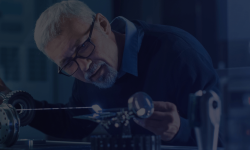Laser cutting offers high precision, but achieving excellent cutting quality depends heavily on using the correct machine settings and optimized parameters. Whether you’re working with metals, plastics, or other materials, the right combination of factors can lead to cleaner cuts, smoother edges, and higher efficiency.
Let’s explore the key ways to improve cutting quality
1. Choose the Right Laser Power
- Higher power is suitable for cutting thicker materials, but too much power can burn or deform the workpiece.
- Lower power works well for thin sheets and fine detail work, but may result in incomplete cuts if not calibrated correctly.
Tip: Always match the laser power to the material type and thickness.
2. Adjust Cutting Speed
- If the speed is too fast, the laser might not fully cut through, leaving burrs or slag.
- If it’s too slow, it can overheat the material, causing burnt edges or warping.
Tip: For cleaner edges, reduce speed slightly and combine with proper assist gas settings.
3. Set the Correct Focus Position
- A precise focal point ensures the laser energy is concentrated where needed.
- If the focus is too high or too low, the cut may be uneven or incomplete.
Tip: Use auto-focus features (if available) or calibrate manually for each new material batch.
4. Use the Right Assist Gas and Pressure
Assist gases blow away molten material and help control oxidation.
| Gas Type | Best for | Effect on Cut |
|---|---|---|
| Oxygen (O₂) | Mild steel | Increases cutting speed, but can cause oxidation (browning) |
| Nitrogen (N₂) | Stainless steel, aluminum | Clean, oxidation-free edges |
| Air | Low-cost alternative | Suitable for low-power jobs |
Tip: Adjust gas pressure according to material thickness – higher pressure for thicker materials.
5. Optimize Frequency and Duty Cycle
For pulsed lasers (commonly in high-precision jobs):
- Higher frequency improves edge smoothness.
- Lower frequency increases cutting speed but may roughen edges.
Tip: For stainless steel or intricate patterns, a higher frequency setting is better.
6. Ensure Clean and Flat Material Surface
- Dirt, rust, or oil can interfere with laser energy absorption.
- A warped sheet may lift off the cutting bed, disrupting focus and airflow.
Tip: Always clean materials before cutting and use clamps or suction beds to keep them flat.
7. Calibrate Your Machine Regularly
- Regular lens cleaning, nozzle alignment, and software updates ensure consistent performance.
Tip: Set a preventive maintenance schedule weekly or monthly, depending on usage.
8. Use Advanced Software Features
Modern laser machines offer features like:
- Real-time monitoring
- Cutting path optimization
- Automatic parameter selection
Tip: Use nesting software to reduce material waste and improve cutting efficiency.
Summary: Key Parameters at a Glance
| Parameter | Effect | Optimization Tip |
|---|---|---|
| Laser Power | Affects cut depth & edge quality | Match with material thickness |
| Cutting Speed | Influences burn and burr formation | Balance with power and gas |
| Focus Position | Affects precision and kerf width | Calibrate for every material change |
| Assist Gas | Impacts speed, cleanliness, and edges | Choose based on material type |
| Gas Pressure | Helps with slag removal and cooling | Adjust for thickness |
| Frequency (Hz) | Smoothness of cut in pulsed lasers | Use high frequency for detailed cuts |
| Material Condition | Cleanliness and flatness matter | Pre-clean and flatten material |
Final Thought
Achieving high-quality laser cuts is not just about having a powerful machine — it’s about understanding the science of settings. By adjusting the key parameters and maintaining your machine properly, you’ll get better productivity, cleaner results, and longer machine life.










